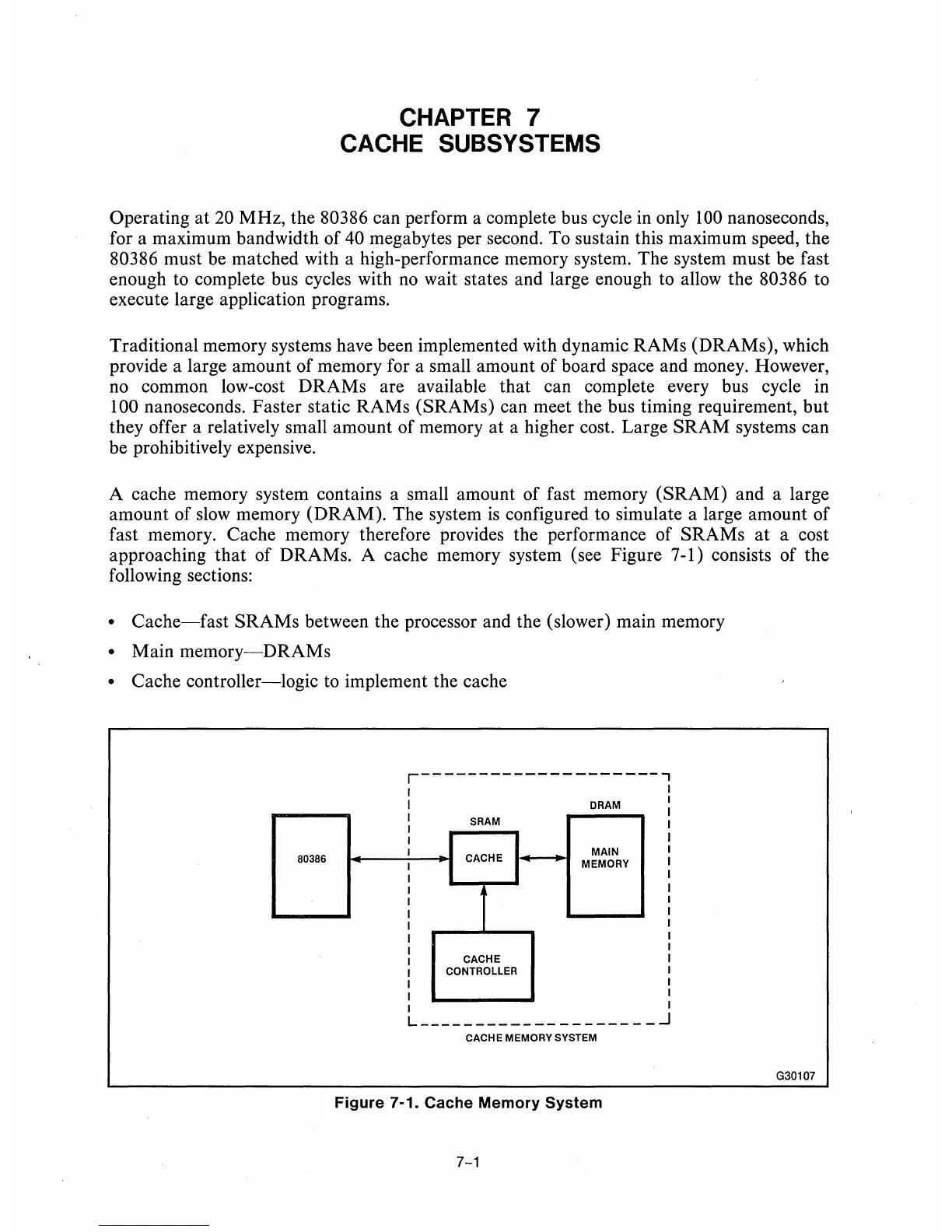CHAPTER
7
CACHE
SUBSYSTEMS
Operating at
20
MHz, the 80386 can perform a complete bus cycle in only
100
nanoseconds,
for a maximum bandwidth of 40 megabytes per second. To sustain this maximum speed, the
80386 must
be
matched with a high-performance memory system. The system must be fast
enough to complete bus cycles with
no
wait states and large enough to allow the 80386 to
execute large application programs.
Traditional memory systems have been implemented with dynamic RAMs (DRAMs), which
provide a large amount of memory for a small amount of board space and money. However,
no common low-cost DRAMs are available that can complete every bus cycle in
100 nanoseconds. Faster static RAMs (SRAMs) can meet the bus timing requirement, but
they offer a relatively small amount of memory at a higher cost. Large SRAM systems can
be prohibitively expensive.
A cache memory system contains a small amount of fast memory (SRAM) and a large
amount of slow memory (DRAM). The system
is
configured to simulate a large amount of
fast memory. Cache memory therefore provides the performance of SRAMs at a cost
approaching that of DRAMs. A cache memory system (see Figure 7-1) consists of the
following sections:
•
Cache-fast
SRAMs between the processor and the (slower) main memory
• Main
memory-DRAMs
• Cache
controller-logic
to implement the cache
r--------------------,
DRAM
SRAM
80386
: CACHE
r--
MAIN
MEMORY
1
CACHE
CONTROLLER
L
____________________
~
CACHE MEMORY SYSTEM
G30107
Figure 7-1. Cache Memory System
7-1

